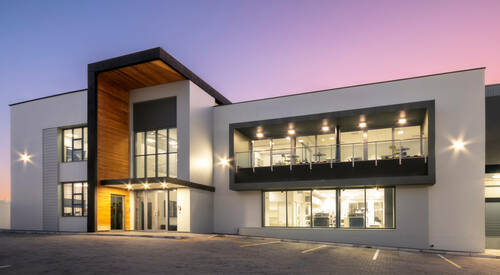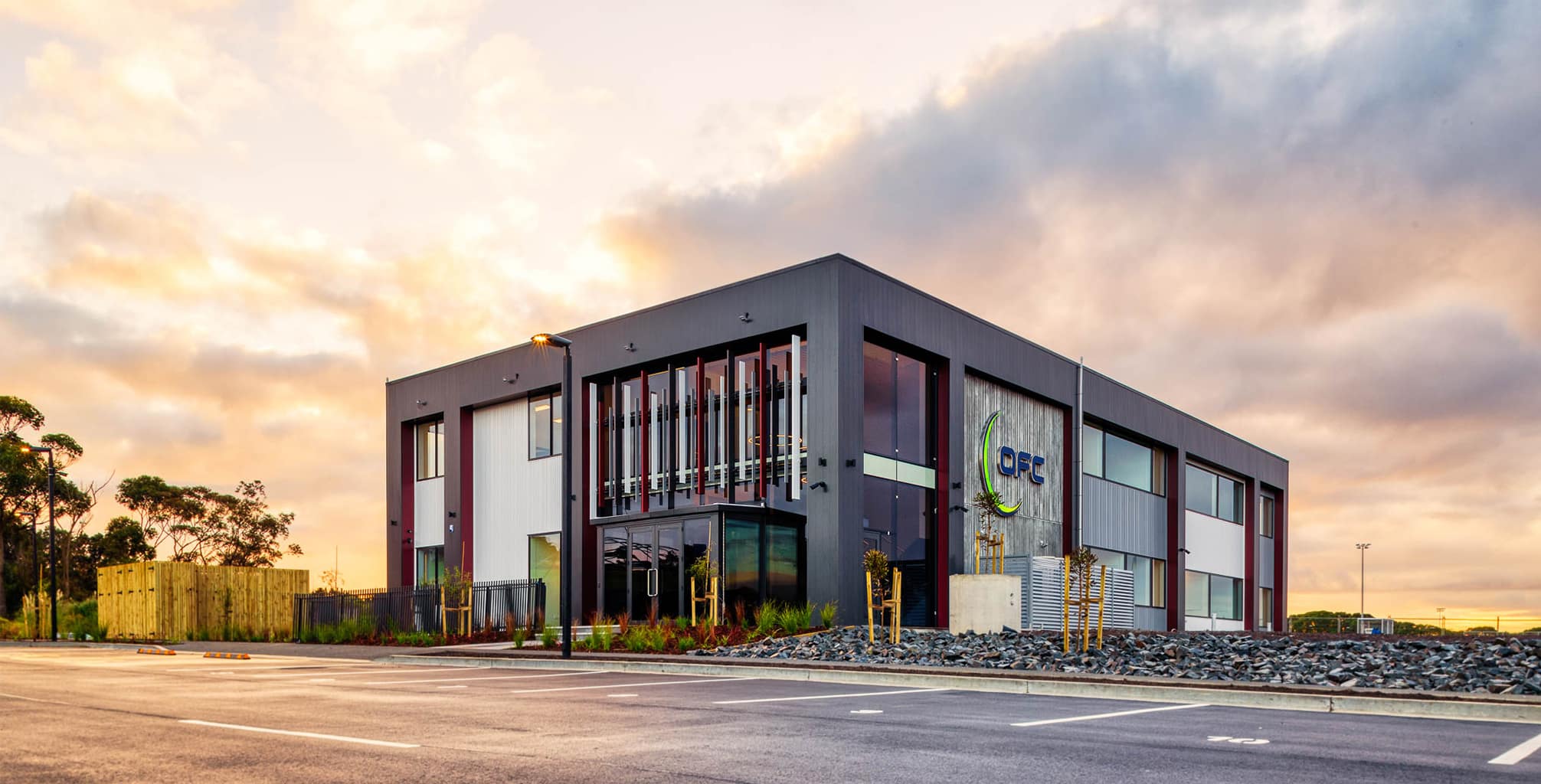Unveiling the Comprehensive Solutions Given by Commercial Architects for Modern Developments
Commercial Architects offer an important function in contemporary advancement projects. They mix design aesthetic appeals with capability while adhering to governing needs. Their know-how expands beyond simple building, integrating lasting techniques and cutting-edge innovations. As they browse intricate zoning legislations, Architects collaborate with numerous stakeholders to bring visions to life. This multifaceted approach increases concerns regarding the progressing role of Architects in forming contemporary areas and the effect of their service future growths.
Recognizing the Function of Commercial Architects in Modern Advancement
In modern urban landscapes, Commercial Architects play a critical duty fit functional and aesthetic rooms that fulfill varied organization needs. Their experience expands past plain layout; they browse complex zoning laws, constructing codes, and ecological regulations. By teaming up with customers, they determine certain demands, guaranteeing that each task straightens with the client's vision while also thinking about practical aspects such as sustainability and cost-effectiveness. Commercial Architects are experienced at integrating innovative modern technologies and materials right into their styles, enhancing both the functionality and energy efficiency of structures. They perform thorough website evaluations to analyze the potential obstacles and opportunities presented by a location. In addition, effective communication with contractors and various other stakeholders is crucial, making certain that the task advances efficiently from conception to completion. Eventually, Commercial Architects contribute in developing areas that not just accomplish useful purposes but additionally contribute to the overall character and vibrancy of city atmospheres.
Concept Style: Transforming Ideas Into Truth
Principle layout functions as a crucial stage in Commercial design, where cutting-edge style options arise from innovative brainstorming. This process depends on joint ideation, bringing together diverse perspectives to refine and boost first principles. As concepts take shape, they change from abstract concepts right into concrete architectural facts.
Innovative Design Solutions
Transforming concepts into fact is the trademark of cutting-edge style remedies in Commercial design. These services mix imagination with capability, addressing the distinct demands of contemporary growths. By leveraging innovative technologies and sustainable techniques, Architects craft spaces that are not only visually appealing however additionally efficient and versatile. Emphasis on user experience drives the style process, guaranteeing that environments foster efficiency and partnership. Each job benefits from a customized approach, where concepts are carefully developed to mirror the customer's vision while thinking about future trends. Cutting-edge style options also prioritize adaptability, permitting modifications in time as business requirements develop. Inevitably, these methods enhance the total value of Commercial rooms, making them essential in today's competitive landscape.

Collective Ideation Process
Partnership offers as the backbone of the ideation process in Commercial design, cultivating imagination and advancement among diverse stakeholders. Architects, clients, engineers, and area participants participate in vibrant conversations, guaranteeing that all point of views are thought about. This inclusive technique enables the exploration of different design ideas, encouraging one-of-a-kind remedies that align with the project's vision. Via workshops and conceptualizing sessions, ideas progress and refine, transforming first concepts into tangible layouts. Modern technology additionally plays an essential duty, with tools such as Building Details Modeling (BIM) promoting real-time cooperation and modifications. Eventually, this collaborative ideation procedure not only boosts the layout result yet additionally cultivates a feeling of possession and investment amongst all celebrations involved, leading to effective Commercial growths.
Zoning Analysis: Browsing Regulations and Conformity
As developers begin on brand-new projects, understanding zoning laws is necessary to making sure conformity and preventing pricey hold-ups. Zoning evaluation plays a vital function in this procedure, as it includes examining local zoning regulations that determine land use, developing elevation, density, and troubles. Commercial Architects possess the proficiency to navigate these complex guidelines, helping clients determine permitted uses and any type of essential variances.
Lasting Layout Practices: Building for the Future
Sustainable design techniques are increasingly essential in the domain of Commercial design, particularly as environmental issues continue to escalate. Architects focus on green products, energy-efficient systems, and design techniques that minimize waste and environmental effect. Integrating renewable resource sources, such as solar panels and wind generators, permits structures to create their very own power and decrease dependence on fossil fuels.Furthermore, sustainable style stresses the relevance of interior environmental top quality. This consists of making use of all-natural light, improving air flow, and choosing non-toxic materials to boost passenger wellness and efficiency. Environment-friendly roof coverings and living wall surfaces are likewise popular features that contribute to biodiversity and metropolitan check it out cooling.Additionally, Commercial Architects commonly incorporate water preservation techniques, like rainwater harvesting and drought-resistant landscape design. Via these ingenious strategies, they create spaces that not just satisfy contemporary requirements but also cultivate a lasting future, resolving the expanding need for accountable advancement in the modern globe.
Task Administration: Ensuring Timely and Reliable Execution
Effective task monitoring is important for making certain that Commercial style tasks are finished in a timely manner and within spending plan. This function includes a series of obligations, including the coordination of numerous stakeholders, timelines, and resources. Commercial Architects take advantage of their competence to produce thorough task plans that detail important milestones and deliverables, permitting for systematic development tracking.Regular communication among employee and customers is essential, promoting transparency and promoting timely decision-making. Threat administration strategies are likewise used to identify potential obstacles early, enabling positive remedies to be created. By utilizing advanced job monitoring tools, Architects can keep track of task performance in real-time, making changes as essential to maintain effectiveness.
Inside Style: Producing Practical and Visual Spaces
Inside design plays an important role in improving both functionality and aesthetics within Commercial rooms. Effective area planning can enhance operations and boost user experience, while aesthetic design principles add to an aesthetically appealing environment - commercial architects. With each other, these elements produce spaces that are not just useful however likewise motivating
Room Preparation Efficiency
While taking full advantage of the utility of offered space, Commercial Architects prioritize area planning effectiveness to create both practical and cosmetically pleasing settings. This technique includes careful evaluation of the spatial format to ensure suitable use every square foot. check my site Architects think about factors such as workflow, ease of access, and natural light to improve use. By purposefully putting furnishings, tools, and workstations, they assist in motion and interaction amongst users, advertising efficiency. Additionally, zoning various areas for details functions helps in taking care of sound and privacy, creating an unified environment. Via efficient space planning, Commercial Architects can change constraints right into opportunities, making certain that each area satisfies the diverse demands of its residents while sticking to regulatory needs and industry criteria.
Visual Style Concepts
Visual layout concepts play a vital function in shaping settings that are not just functional however likewise aesthetically enticing. These principles assist Commercial Architects in creating rooms that reverberate with customers while boosting brand name identification. Crucial element include equilibrium, percentage, and harmony, which interact to develop a natural look. Color pattern and materials are thoroughly selected to stimulate preferred emotions and sustain the general theme. In addition, lights plays an essential duty, affecting state of mind and visibility while highlighting architectural functions. By incorporating these principles, Architects guarantee that areas are not only practical yet also inviting and inspiring. Eventually, reliable visual style cultivates a positive customer experience, encouraging involvement and satisfaction in Commercial atmospheres.
Partnership With Stakeholders: Promoting Successful Collaborations
Effective collaborations in Commercial style hinge on reliable cooperation with stakeholders, making certain that every voice is heard and valued. This collective strategy involves interesting different parties, including customers, specialists, and neighborhood members, throughout the design and development process. By fostering open communication, Commercial Architects can resolve issues, collect understandings, and align the task's vision with stakeholder expectations.The integration of diverse point of views boosts creative thinking and development, causing more useful and cosmetically pleasing designs. Normal meetings, feedback sessions, and workshops promote this discussion, enabling Architects to adjust their plans in feedback to stakeholder input. Additionally, establishing depend on through openness and responsibility enhances these collaborations, causing a smoother project execution.Ultimately, the success of modern advancements depends on the Architects' ability to navigate and balance differing interests, producing a collective environment that promotes common goals and mutual success.
Frequently Asked Questions
How Do Commercial Architects Handle Budget Plan Constraints Throughout a Project?

What Sorts of Software Application Do Commercial Architects Frequently Utilize?
Commercial Architects frequently use software application such as AutoCAD for drafting, Revit for Structure Details Modeling, SketchUp for 3D modeling, and project administration tools like Microsoft Project to improve collaboration and improve process throughout the design procedure.
Can Commercial Architects Aid With Getting Funding for Projects?
Commercial Architects can help in getting financing for projects by preparing detailed propositions, assisting to articulate design visions, and giving monetary projections that can enhance the chance of securing necessary financing from capitalists or monetary institutions.
Just How Do Architects Make Sure Safety Throughout the Building Process?
Architects assure security during building and construction by executing rigorous style criteria, coordinating with designers, conducting normal website examinations, adhering to regional regulations, and cultivating interaction among all stakeholders to minimize threats and promote a safe and secure working atmosphere.
What Continuous Assistance Do Architects Give After Project Conclusion?
After project completion, Architects supply continuous support with upkeep examinations, efficiency assessments, and style alterations. They guarantee buildings satisfy developing requirements, address potential issues, and keep conformity with regulations, promoting a long-term relationship with customers.